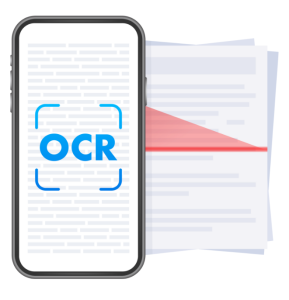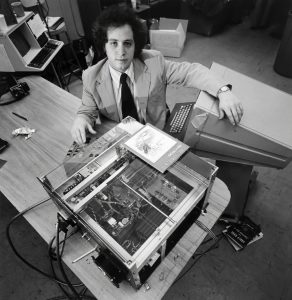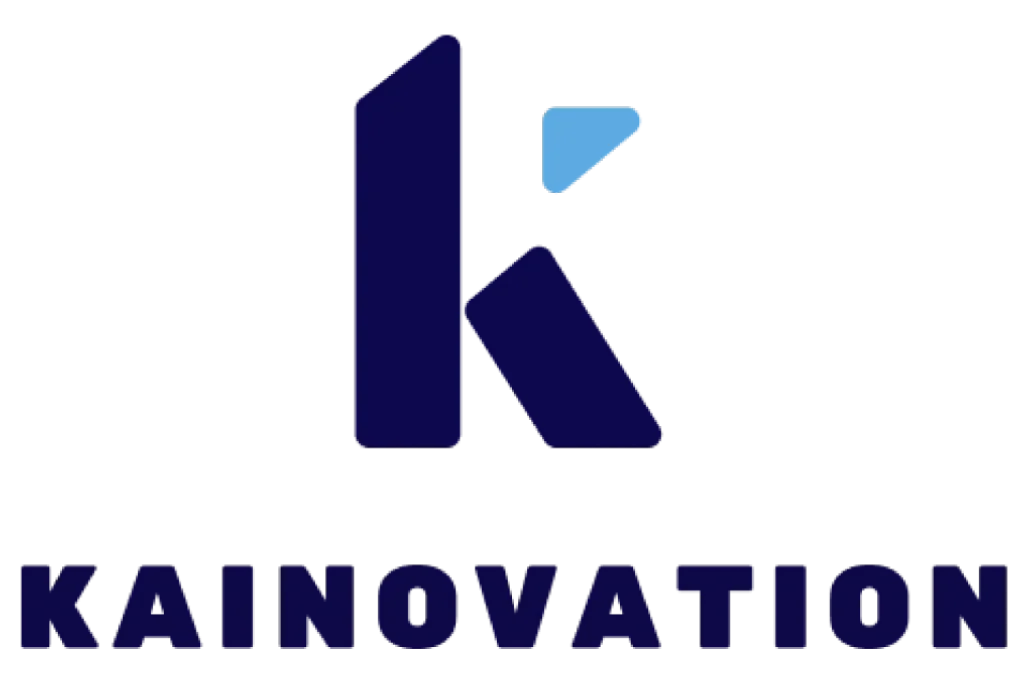In today’s digital age, businesses need faster and more efficient ways to manage information. Optical Character Recognition (OCR) technology plays a key role in this transformation by converting printed and handwritten documents into editable, searchable digital formats. From its early beginnings to its modern AI-powered capabilities, OCR continues to reshape industries and streamline operations.
What is OCR?
 Optical Character Recognition (OCR) is a technology that uses automation, computer vision, and AI to convert printed or handwritten documents, images, and scanned files into machine-readable, editable text. This allows users to search, copy, and analyse content from sources like receipts, forms, or historical books without manual data entry. OCR is widely used across industries to improve accuracy, save time, and digitise large volumes of information efficiently.
Optical Character Recognition (OCR) is a technology that uses automation, computer vision, and AI to convert printed or handwritten documents, images, and scanned files into machine-readable, editable text. This allows users to search, copy, and analyse content from sources like receipts, forms, or historical books without manual data entry. OCR is widely used across industries to improve accuracy, save time, and digitise large volumes of information efficiently.
History of OCR

The origins of Optical Character Recognition (OCR) trace back to the early 20th century, with significant contributions from Gustav Tauschek, a self-taught Viennese engineer. In 1929, Tauschek invented the “Reading Machine”, one of the first practical OCR devices, which used a rotating disk and a photoelectric sensor to convert visual text into machine-readable formats. His device laid the foundation for further developments in OCR technology, similar to Goldberg’s Statistical Machine, which had earlier used a photoelectric cell for pattern recognition in the 1920s.
By 1931, OCR had evolved to convert text to telegraph messages, and by 1951, it could even convert text into Morse Code. By the 1960s and 1970s, OCR technology saw key advancements with the introduction of Intelligent Character Recognition (ICR) and Magnetic Ink Character Recognition (MICR), expanding its applications into banking. Ray Kurzweil’s development of omni-font OCR in 1978 further broadened its capabilities, allowing it to recognise any typeface. The 1980s saw integration into office copiers and barcode readers, making OCR more widely accessible.
Today, OCR technology has advanced far beyond its mechanical roots, powered by AI and deep learning. Modern OCR software, like CamScanner and Adobe Acrobat, can process multiple languages with high accuracy, playing a pivotal role in digitising documents, automating data entry, and enhancing accessibility. From Tauschek’s mechanical Reading Machine to today’s AI-driven OCR tools, the core principle remains the same: converting printed or handwritten content into digital, searchable, and editable text.
How does OCR differ from traditional data entry?
Feature |
Traditional Data Entry |
Optical Character Recognition (OCR) |
| Process | Relies on manual input of data by human operators. This typically involves reading information from a source document (paper-based or digital) and typing it into a computer system using a keyboard. | Uses software to automatically convert images of text (from scanned documents, PDFs, or photographs) into machine-readable text. The software analyses the image, identifies characters, and translates them into digital text. |
| Speed | Generally slower, as the speed is limited by human typing ability and the need for manual review. | Significantly faster than manual data entry, capable of processing large volumes of documents quickly. |
| Accuracy | Prone to human errors such as typos, omissions, and transpositions, especially with large volumes of data. Accuracy depends heavily on the operator’s skill and attention to detail. | Accuracy levels have improved significantly with advancements in technology, but it can still be affected by the quality of the original document (e.g., poor print quality, skewed images, handwritten text in complex styles). Often requires post-processing and human review to correct errors. |
| Cost | Can be labour-intensive and costly, especially for large-scale projects, considering wages, training, and potential error correction. | Involves an initial investment in OCR software and hardware. However, in the long run, it can be more cost-effective for high-volume tasks by reducing labour costs and increasing efficiency. |
| Scalability | Difficult to scale quickly to handle sudden increases in data volume, as it requires hiring and training more personnel. | Easily scalable to handle large volumes of data by processing more documents simultaneously or utilising more powerful systems. |
| Technology | Requires basic computer hardware and software for data input. | Requires OCR software and scanning hardware or integration with image processing tools. Advanced OCR may incorporate Artificial Intelligence (AI) and Machine Learning (ML) for improved accuracy and handling of complex documents. |
| Data Types | Can handle various data types, including structured and unstructured information, and can interpret handwriting (though with varying accuracy depending on legibility). | Primarily designed for printed or written text in various fonts. Handling handwritten text (Intelligent Character Recognition – ICR) is a subset of OCR and can be more challenging. |
| Automation | Minimal to no automation involved. | Highly automated process, reducing the need for manual intervention in the initial data capture stage. |
Application of OCR Tools in Businesses
Optical Character Recognition (OCR) technology has evolved into a powerful tool with wide-ranging applications across various industries. Below are some of the key business applications of OCR:
How OCR Speeds Up Invoice and Receipt Handling
OCR can automatically extract key information from invoices and receipts, such as vendor names, dates, amounts, due dates, and other key details. This eliminates the need for manual data entry into accounting systems, speeding up processing, reducing errors, and allowing for faster payments and better financial management.
How OCR Improves Cheque Processing in Banking
In this sector, it enables the automated processing of cheques by scanning and interpreting the written information to facilitate transactions. While printed cheques are processed with high accuracy, handwritten ones may still need occasional manual verification. Nevertheless, this automation has significantly reduced processing times and improved overall efficiency in banking operations.
How OCR Transforms Legal Document Management
Large volumes of printed legal materials such as affidavits, judgments, filings, and wills can be efficiently digitised, stored, and indexed for quick retrieval. Modern OCR systems also support non-Roman scripts, enabling the digitisation of documents in languages like Chinese and Arabic. For a profession that depends on reviewing past rulings, the ability to quickly retrieve relevant documents is a valuable asset.
How OCR Supports KYC and Identity Verification
OCR can extract data from identity documents like passports, driver’s licenses, and ID cards, streamlining the customer onboarding process and aiding in identity verification for KYC compliance.
How OCR Streamlines Healthcare Documentation
Patient records often involve numerous documents, including insurance and medical forms. By using OCR-enabled form processing tools, key information can be automatically extracted and entered into digital systems. This ensures that patient data is accurately and promptly stored, allowing healthcare providers to access it when needed and maintain efficient, up-to-date records.
How OCR Enhances Access for the Visually Impaired
For individuals with visual impairments, the combination of OCR and speech synthesis offers a powerful assistive tool. Printed text can be scanned and converted into a digital format using OCR, after which text-to-speech technology reads the content aloud. This seamless process enables blind users to access and understand physical documents independently.
Benefits of Using OCR Tools
There are many valuable benefits to implementing OCR technology in businesses today. From improving efficiency to cutting operational costs, OCR transforms how organisations manage their information. Here are some of the key advantages:
Creation of Searchable Archives
One of the most significant benefits of OCR is the ability to create searchable digital archives. Physical documents or scanned images that were previously inaccessible in terms of searchability can be converted into text-based formats such as searchable PDFs. This makes it possible for authorised personnel to quickly locate information using keywords, without having to read through entire documents. In workplaces where time is of the essence, such as legal offices or hospitals, this capability greatly enhances efficiency and responsiveness.
Lower Labour Costs
Manual data entry can be both time-consuming and resource-intensive. By automating the extraction of information from forms, invoices, receipts, and other documents, OCR reduces the need for large teams dedicated to data input. This leads to considerable cost savings—not just in terms of wages, but also in recruitment, training, and management of administrative staff. The freed-up resources can then be redirected towards higher-value tasks, promoting productivity and business growth.
Reduced Paperwork and Storage Costs
Storing physical documents demands space, materials, and maintenance, all of which come with ongoing costs. With OCR, organisations can digitise vast quantities of paper-based content and store it electronically. This eliminates the need for large filing cabinets and on-site storage rooms, while also cutting down on printing and copying costs. It is also a more sustainable option, reducing reliance on paper and contributing to eco-friendly practices.
Minimising Human Error
Human error is a common issue in manual data entry. Typos, incorrect figures, or misplaced details can lead to costly mistakes. OCR greatly reduces this risk by providing a more consistent and reliable method of capturing data. While no technology is entirely flawless, OCR significantly outperforms human accuracy in large-scale document handling.
Quicker Data Retrieval
Speed is a critical factor in decision-making. OCR enables instant search and retrieval of digital documents through keyword or metadata searches. Instead of spending time flipping through binders or file boxes, employees can find the required information in seconds, helping them respond faster and work more efficiently.
At Kainovation, we’ve successfully implemented traditional OCR techniques for processing various official Sri Lankan documents, as demonstrated in our previous blog posts:
- Key Information Extractor for Sri Lankan Driving License (detailed in our blog)
- Key Information Extractor for Sri Lankan Vehicle CR Book (explained in our blog)
- Key Information Extractor for Sri Lankan Passport (covered in our blog)
Conclusion
OCR technology has come a long way from its mechanical origins to become a vital tool for digital transformation. By automating data entry, improving accuracy, and making information instantly accessible, OCR helps organisations save time, reduce costs, and work more efficiently. As technology continues to advance, the impact of OCR will only grow stronger across all sectors.
References
- Adobe. (2025). OCR meaning: What is OCR and why it’s important. https://www.adobe.com/acrobat/guides/what-is-ocr.html
- History Computer. (2021, January 4). Optical Character Recognition (OCR) Explained — Everything You Need To Know. https://history-computer.com/technology/optical-character-recognition/
- Invensis. (2025). Manual Data Entry Challenges & How to Avoid Them (2024-2025). https://www.invensis.net/blog/manual-data-entry-challenges
- Khurana, S. (2018, February 25). Applications of OCR You Haven’t Thought Of. https://medium.com/swlh/applications-of-ocr-you-havent-thought-of-69a6a559874b
We are Kainovation Technologies, leading the way in AI, ML, and Data Analytics. Our innovative solutions transform industries and enhance business operations. Contact us for all your AI needs.

